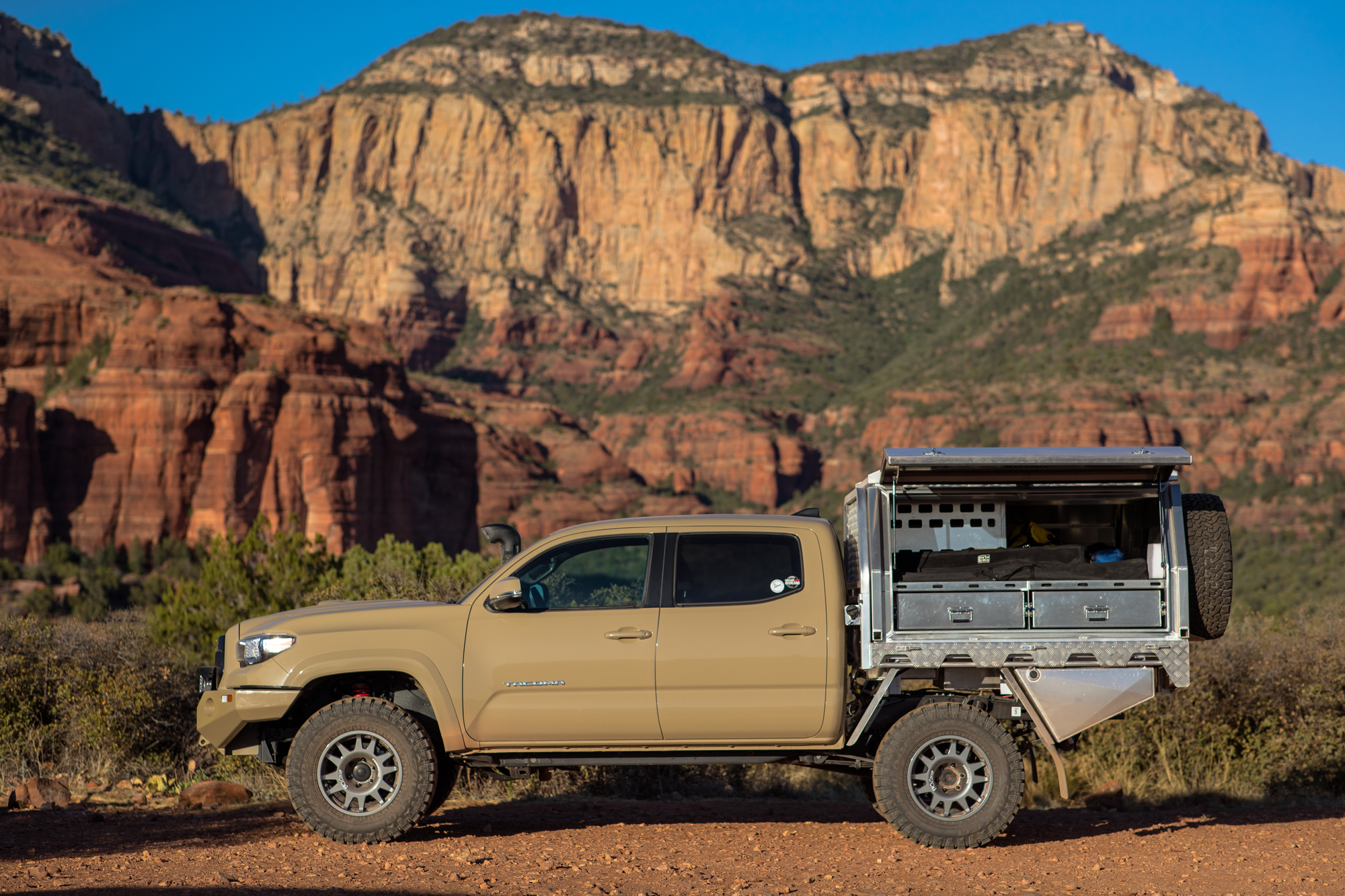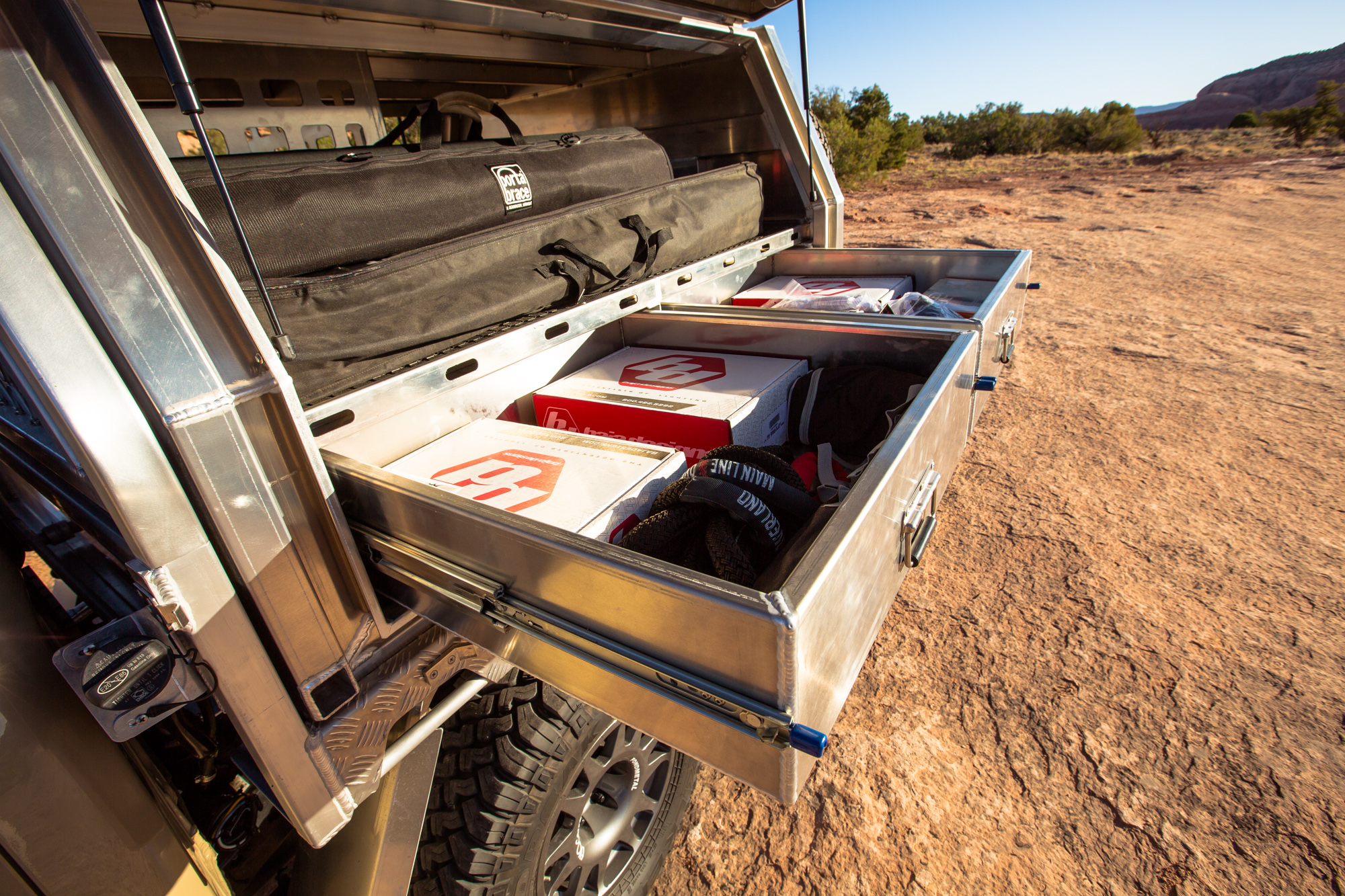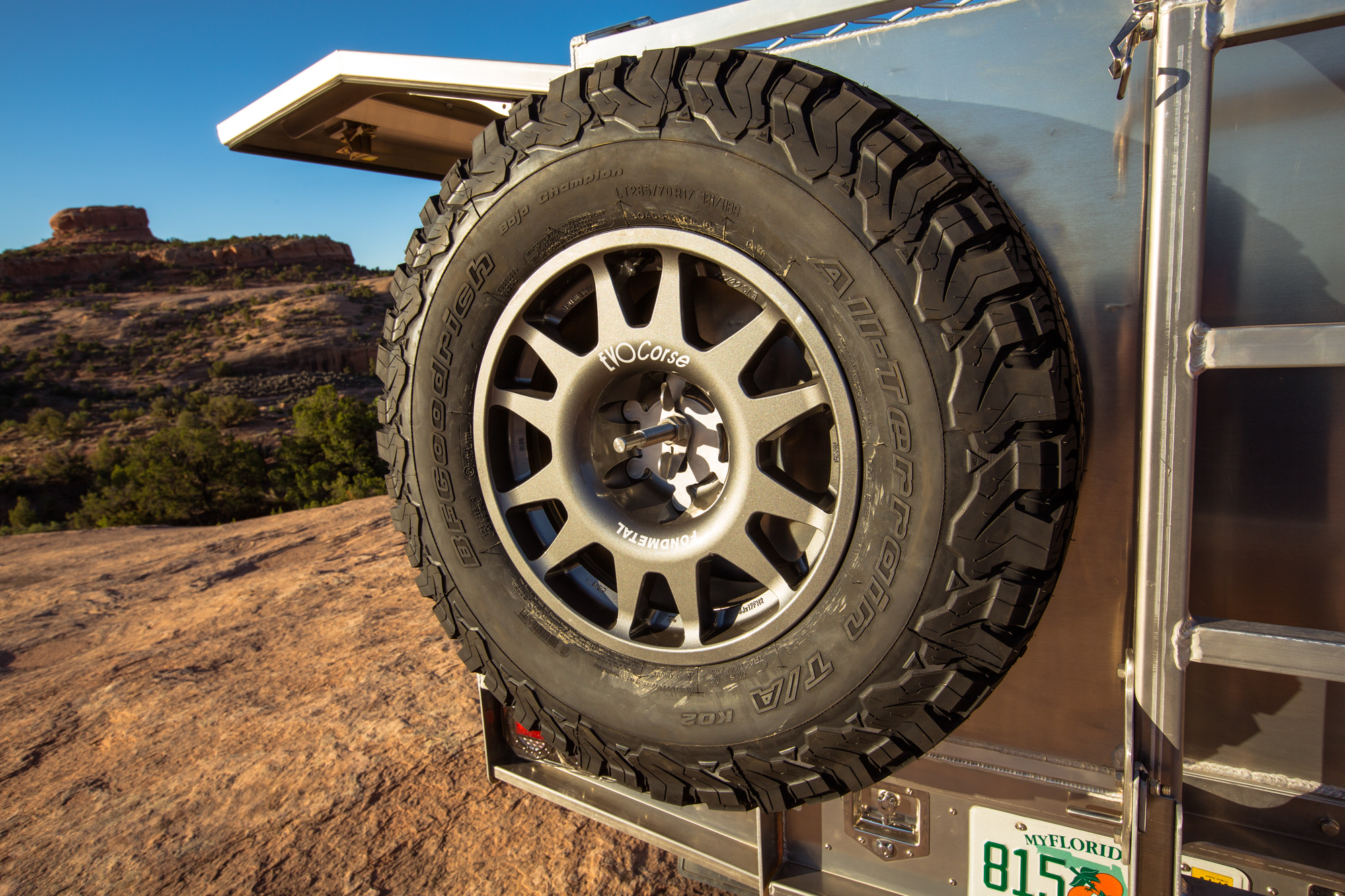The Tacoma has long been a favorite among overlanders for its reliability, capability, and compact size, but the latest generation seems to be most popular yet. Sure, there are some mixed reviews, but there’s no denying that the internet is flooded with more third-gen Tacomas than it knows what to do with. That is a great thing, of course, but it has left us feeling rather uninspired by most of the builds, which is why this Quicksand crew cab caught our eye. Not only is it well done, but it is done differently, and we’re big fans of both. To learn a little more, we contacted Main Line Overland and asked for the full rundown on their latest shop truck.

According to Tom Henwood, this 2017 Tacoma was built as a test platform and daily driver for their New Hampshire shop. They needed something capable enough to tackle Northeastern snows, small enough to handle the tight trails, and versatile enough to carry campers and equipment. The Tacoma was an obvious choice.
The first stage of the build was concerned with improving clearance and traction, which began with Main Line’s proprietary GTS suspension system. They selected a package sprung for the truck’s soon to be fully loaded weight, which would include an array of accessories and recovery equipment along with a Norweld tray. Since it would occasionally be used for hauling a Four-Wheel Camper, they also added Firestone Ride Rite airbags with Daystar cradles. These airbags can be inflated to augment the suspension when the camper is installed but deflated to allow the truck to handle normally when the bed is empty or equipped with a canopy. The cradles, on the other hand, enable the airbags to lift free of the frame during articulation, preventing them from tearing or limiting travel like traditional bags.

With this additional lift installed, they then turned to improve wheels and tires. As the exclusive US dealers for EVO Corse wheels, we weren’t surprised to see they selected a 17×8 set of them in gray with zero offset. This was more than just an upgrade in vanity though. With additional strength throughout the wheel and improved grip around the bead, they help improve the truck’s performance and reduce the chance of wheel failure in the field, a claim well tested by Nasser Al Attiyah’s Dakar-winning Hilux after finishing a stage on this shredded tire.

These wheels were wrapped in 285/70/17 Falken Wildpeak A/Ts which provide additional grip in the Northeastern mud and flotation on snowy trails. For times when even more traction is needed, Main Line installed a Harrop Rear E-Locker.
If you haven’t been to the Northeast, we’ll tell you their tracks are tight and technical, so armor was going to be a must. To protect the rocker panels from being bashed in, Main Line installed a set of CBI sliders with kickouts toward the rear. Photos are of a pre-install of sliders. These were matched by skid plates underneath to shield vital driveline components and fluid pans. The front end was then guarded with a Dobsinons winch bumper painted to match in the factory Toyota Quicksand tan. Inside they mounted a Warn VR8-S winch with a pulling capacity of 8,000 pounds. It’s sporting 90 feet of synthetic line for reduced weight and safe recoveries and is finished off with a Factor 55 Flatlink-E Expert Link at the end.

Now anyone who has ever been on a trail at night knows that lighting is key. It can not only save your bacon by helping you spot animals and obstacles in the road before it’s too late, but be an immense help in locating a campsite on long days when you arrive well after dark. We’ve all been there. To make the task easier, Main Line gave this Tacoma a small sun’s worth of lighting. Two Baja Designs LP9 driving lights adorn the front end pumping out 11,025 lumens from nine forward-facing LEDs, and an additional 1,140 lumens from six Integrated Peripheral Technology (IPT) side facing LEDs. These are backed by a Baja Designs S8 20-inch light bar, which throws out an additional 12,656 lumens from 16 Cree LEDs. The combination might look like a landing aircraft, but it’s certainly effective.

 The last part of phase one was literally topped off by a Rhino-Rack Pioneer platform on the cab. This can serve as auxiliary storage and is the full-time home of the truck’s MaxTrax recovery boards.
The last part of phase one was literally topped off by a Rhino-Rack Pioneer platform on the cab. This can serve as auxiliary storage and is the full-time home of the truck’s MaxTrax recovery boards.
The second stage is where things get really different and very interesting. To maximize the Tacoma’s versatility, they removed the factory bed and installed a Norweld 5 foot Basic Weekender tray. It’s essentially a modular flatbed package designed and built in Australia to survive the Outback. The product is constructed almost entirely out of aluminum to keep it lightweight and corrosion resistant, which ensures it can be passed from vehicle to vehicle as you upgrade trucks over the course of a lifetime. Although they are relatively new to North America, Norweld has been in business over 40 years down in Oz, so they know a thing or two about building products to last.

After installation, this tray was equipped with one behind-the-wheel toolbox and one behind-the-wheel 43-liter water tank, as well as a clip-on table which integrates directly into the tray rails. These give it additional lockable storage and functionality regardless of the tray configuration, and speaking of configurations, this truck has three to maximize versatility.

The first and most obvious setup is a flatbed configuration that Main Line uses for hauling equipment, landscaping, motorcycles, and shop supplies. Pretty much anything you would use a standard flatbed for.
The second configuration is paired to a Norweld Canopy which shares the same high-quality aluminum construction as the tray. The canopy gives this Tacoma lockable secure storage and a whole lot of easily accessible organization. There are three independent pull-out drawers on heavy-duty slides which are perfect for tools, recovery gear, or kitchen kits. The interior can also be separated into sections, or left open for a massive singular storage space.




A drop-down fridge slide holding a Dometic CFX75 dual zone fridge freezer sits in the front, giving you easy access to food and cold drinks without having to peek over the fridge. At the back, you’ll find a drop-down roof ladder that slots directly between the spare tire holder and the jerry can mount, giving you access to the weight-bearing roof or a rooftop tent. The spare tire carrier also opens up the undercarriage of the truck for a second spare or an additional fuel tank. The canopy is also equipped with Norweld’s Basic canopy wiring system including Anderson, USB, and DC Power Ports. These draw from a DEKA Intimidator AGM battery located on the integrated battery tray.




This canopy setup is ideal for more technical trails, narrow roads, and traveling through areas where you want secure locking storage, but if you’d prefer a little more comfort, this Tacoma packs a third configuration just for that. By unbolting the tray, you can add a flat-bed Four-Wheel Camper to make this a true travel vehicle and four-season RV.

Although replicating a Tacoma with all of these options and packages would surely cost a small fortune, it is undeniably cool, and a dream setup to be sure. Thankfully, the majority of the modification cost is in the tray, canopy, and camper setups, which can all be transferred from truck to truck as you trade out through the years. That will help spread out the cost over time, making the setup much more viable for your everyday buyer. At least, that’s what most of us are going to tell our significant others when we explain why this makes complete financial sense. It’ll work, right?


